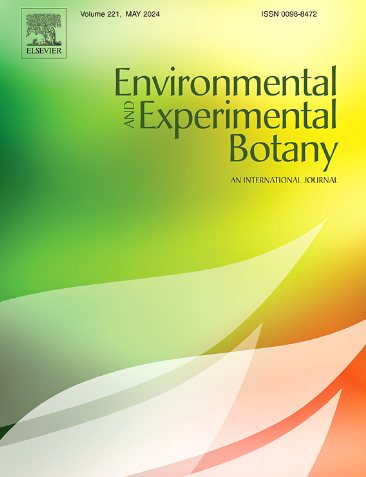ScNF-YC2, a protein interacting with ScABI3, is a transcription factor regulating abiotic stress response in Syntrichia caninervis
IF 4.7
2区 生物学
Q2 ENVIRONMENTAL SCIENCES
引用次数: 0
Abstract
The Nuclear Factor Y (NF-Y) transcription factor family plays a crucial role in plant abiotic stress responses. However, its function in Syntrichia caninervis, a desiccation-tolerant desert moss and an ideal model organism for investigating plant stress response mechanisms, remains poorly understood. In this study, we identified ScNF-YC2, a member of the NF-Y family, as a potential interacting partner of ScABI3, a key regulator of the abscisic acid (ABA) signaling pathway. Through yeast two-hybrid (Y2H), pull-down, and bimolecular fluorescence complementation (BiFC) assays, we confirmed the physical interaction between ScNF-YC2 and ScABI3 in the nucleus. Further analysis revealed that ScNF-YC2 is relatively conserved and is significantly induced under drought, salt, and ABA treatments. Overexpression of ScNF-YC2 in Arabidopsis thaliana and S. caninervis exacerbated the sensitivity to salt and drought stress by elevating reactive oxygen species (ROS) accumulation and suppressing antioxidant enzyme activity. Conversely, ScNF-YC2 overexpression partly reduced sensitivity to ABA in these plant species. These findings suggest that ScNF-YC2 plays a critical role in regulating abiotic stress responses in S. caninervis through its interaction with ScABI3, by modulating ROS homeostasis. Thus, the study highlights the subtle role of NF-Y transcription factors in regulating stress responses in desert moss.
ScNF-YC2是一种与ScABI3相互作用的蛋白,是调节犬口疮非生物应激反应的转录因子
核因子Y (NF-Y)转录因子家族在植物的非生物胁迫反应中起着至关重要的作用。然而,其在耐干燥荒漠苔藓犬心藓(Syntrichia caninervis)中的功能尚不清楚,犬心藓是研究植物逆境反应机制的理想模式生物。在这项研究中,我们确定了NF-Y家族成员ScNF-YC2作为脱落酸(ABA)信号通路的关键调节因子ScABI3的潜在相互作用伙伴。通过酵母双杂交(Y2H)、拉下(pull-down)和双分子荧光互补(BiFC)实验,我们证实了ScNF-YC2和ScABI3在细胞核内的物理相互作用。进一步分析表明,ScNF-YC2相对保守,在干旱、盐和ABA处理下均有显著的诱导作用。ScNF-YC2在拟南芥和犬南芥中过表达,通过增加活性氧(ROS)积累和抑制抗氧化酶活性,加重了对盐和干旱胁迫的敏感性。相反,ScNF-YC2过表达在一定程度上降低了这些植物对ABA的敏感性。这些发现表明,ScNF-YC2通过与ScABI3的相互作用,通过调节ROS稳态,在调节犬S. caninervis的非生物应激反应中起关键作用。因此,本研究强调了NF-Y转录因子在调节荒漠苔藓逆境反应中的微妙作用。
本文章由计算机程序翻译,如有差异,请以英文原文为准。
求助全文
约1分钟内获得全文
求助全文
来源期刊

Environmental and Experimental Botany
环境科学-环境科学
CiteScore
9.30
自引率
5.30%
发文量
342
审稿时长
26 days
期刊介绍:
Environmental and Experimental Botany (EEB) publishes research papers on the physical, chemical, biological, molecular mechanisms and processes involved in the responses of plants to their environment.
In addition to research papers, the journal includes review articles. Submission is in agreement with the Editors-in-Chief.
The Journal also publishes special issues which are built by invited guest editors and are related to the main themes of EEB.
The areas covered by the Journal include:
(1) Responses of plants to heavy metals and pollutants
(2) Plant/water interactions (salinity, drought, flooding)
(3) Responses of plants to radiations ranging from UV-B to infrared
(4) Plant/atmosphere relations (ozone, CO2 , temperature)
(5) Global change impacts on plant ecophysiology
(6) Biotic interactions involving environmental factors.
 求助内容:
求助内容: 应助结果提醒方式:
应助结果提醒方式:


